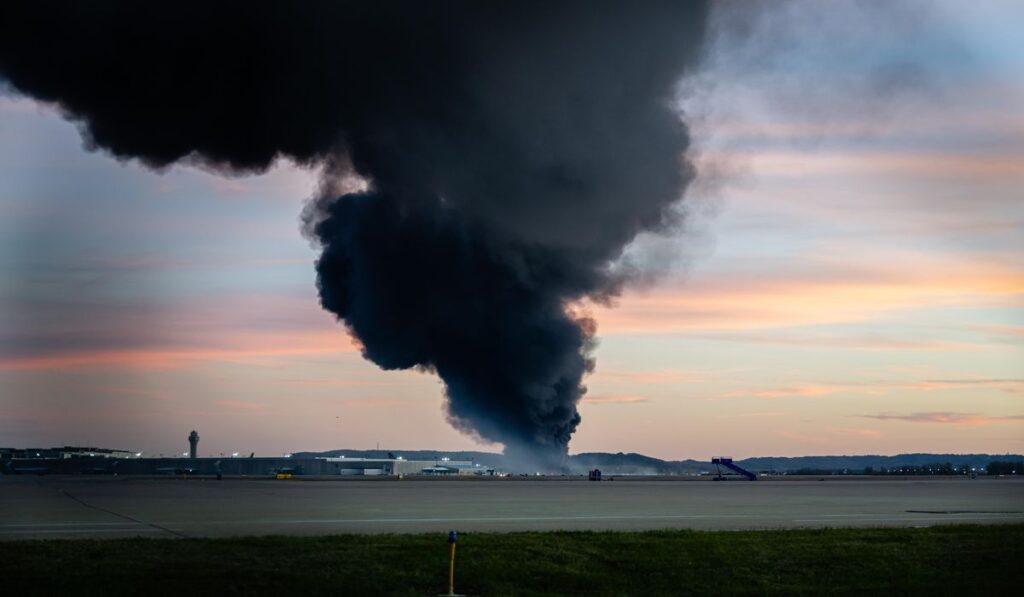A UPS cargo jet crashed and burst into a massive fireball while taking off from the company’s global aviation hub in Louisville, Kentucky, killing at least seven people and injuring 11 in a sudden, destructive accident that immediately drew emergency crews and an investigation.
The aircraft went down during takeoff, exploding on impact and sending flames and smoke across the airport perimeter. Initial reports confirmed at least seven fatalities and 11 injuries, and local responders raced to contain the blaze and treat the wounded. The scene left a charred stretch of tarmac and scattered debris where a routine shift turned into a crisis.
Witnesses described a terrifying fireball and a shockwave that rattled nearby buildings, as flames leapt high and black smoke drifted over the facility. Cargo workers and other airport personnel scrambled for cover while emergency crews established a perimeter and prioritized search and rescue. The scale of the fire made immediate access difficult and complicated the first hours of the response.
Firefighters and emergency medical technicians set up triage on the field and coordinated transport to local hospitals for the seriously hurt. Multiple ambulances and specialized crash-response units were on scene within minutes, working to control secondary fires and stabilize survivors. Authorities also implemented road closures around the hub to keep bystanders away and let emergency vehicles move freely.
The crash occurred at UPS’s major air hub, a crucial node in the company’s global logistics network where thousands of packages move through each night. That hub handles high volumes of freight and is integral to time-sensitive delivery operations, so any prolonged disruption could ripple through supply chains. Officials quickly began assessing damage to runways and facilities to determine how long normal operations would be affected.
Federal and local aviation authorities opened an immediate investigation to determine what went wrong, with the National Transportation Safety Board typically taking lead on technical probes of this kind. Investigators generally collect flight data recorders, examine maintenance records, and interview crew and ground staff to piece together a timeline. In the meantime, flight operations at the airport were limited while teams documented the scene and secured evidence.
The human toll extended beyond numbers as co-workers, friends, and family members sought word on the missing and injured. Employees of cargo hubs face risks every day, often working overnight schedules and tight turnarounds to meet delivery windows. Support resources and counseling are usually mobilized after such tragedies to help staff and first responders cope with the shock and grief.
Questions about maintenance, operational procedures, and weather conditions are natural after an accident, though it takes time for facts to emerge. Aviation safety investigations are methodical, weighing mechanical failure, human factors, and environmental influences before drawing conclusions. Meanwhile, industry watchers and regulators will be watching for whether recommendations or temporary safeguards are needed to prevent repeat incidents.
Local logistics planners and shippers began contingency measures almost immediately to reroute time-sensitive freight and minimize delays as the hub’s capacity was evaluated. Large carriers and trucking partners often activate backup plans to move cargo through alternate facilities until primary routes are restored. For businesses and consumers, these disruptions can lead to short-term delays, but carriers generally work quickly to reroute loads and recover schedule integrity.
As investigators work to establish a cause, the community remains focused on recovery and support for victims’ families. Emergency management agencies and the airline community typically coordinate news briefings to keep the public informed without compromising the probe. The next days will be critical for officials to release verified details and to outline steps for both the ongoing investigation and the restoration of operations at the aviation hub.



